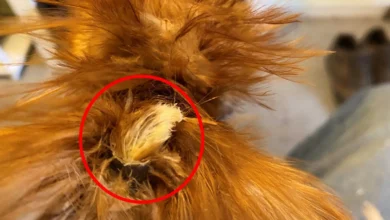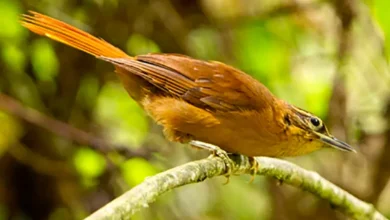The Chestnut-tipped Toucanets (Aulacorhynchus derbianus) or Chestnut-rumped Toucanets – are South American toucans that form superspecies with the Groove-billed Toucanets (Aulacorhynchus sulcatus) and are also closely related to the Emerald Toucanets (Aulacorhynchus prasinus).

Alternate (Global) Names:
Chinese: ????? … Czech: arassari bledohrdlý, Arassari šedohrdlý … Danish: Bjergtukanet … Dutch: Derby-arassari, Derby’s Arassari … German: Derby Arassari, Derbyarassari, Derby-Arassari … Finnish: Pilvitukaani … French: Toucanet de Derby … Italian: Tucanetto codacastana, Tucanetto derbiano … Japanese: kuroakamidorichuuhashi … Norwegian: Bruntipptukan … Polish: pieprzojad amazonski, pieprzojad amazo?ski … Portuguese: Tucaninho-verde … Russian: ??????? ????? … Slovak: tukaník malachitový … Swedish: Derbytukanett … Spanish: Tucancito Colicastaño, Tucancito Común, Tucanete de Derby, Tucanete Filicastaño
Distribution / Range
Chestnut-tipped Toucanets occur naturally in the South American countries of Bolivia, Brazil, Colombia, Ecuador, Guyana, Peru, Suriname and Venezuela, where they inhabit subtropical or tropical moist montanes. Throughout their very large range, these toucanets are uncommon; however, this species is currently not considered to be at risk of extinction.
Subspecies and Distribution:
- Aulacorhynchus derbianus derbianus (Gould, 1835) – Nominate Race
- Found in the humid highland forests from of extreme southern Colombia south along the east Andes slope to Cochabamba in central Bolivia.
- [ nigrirostris] from central Peru now considered one and the same species with the nominate race.
- Aulacorhynchus derbianus duidae (Chapman, 1929)
- Occurs naturally in the mountains of southern Venezuela in Amazonas and western Bolívar. Also found in adjacent northern Brazil.
- Aulacorhynchus derbianus osgoodi (Blake, 1941)
- Found in the Acary Mountains in southern Guyana and the Wilhelmina Mountains in Surinam.
- Aulacorhynchus derbianus whitelianus (Salvin and Godman, 1882)
- Smaller than the nominate race and genetic evidence suggests they should be treated as separate species.
- Range: Found in the humid forests found in the mountains of southern Venezuela (southeastern Bolívar) and northern Guyana (the highlands of the Guiana Shield).
Description
Toucans have distinctive coloration, markings, and are particularly noted for their large colorful bills.
They are fairly long-lived with a lifespan around 20 years.
Breeding / Nesting
The mating ritual is a fun-loving affair for toucans, as they throw fruit to one another.
Like all of their other activities, nesting happens high up in hollow areas in trees. The bill is not effective for digging or any other type of extensive excavation work and so they must rely on holes already formed by other means.
The nests are not lined, but the two to four shiny white eggs that are laid each year rest on a few wood chips created while enlarging the opening or on various kinds of regurgitated seeds collected for this purpose. Parents share equally in incubation duties, but rarely sit on the nest for more than an hour at a time and the eggs are often left uncovered. Both parents share in feeding fruit to the babies for up to 8 weeks.
After 16 days the nestlings are born blind, with no trace of down on their pink skin. The bill is unremarkable until about 16 days old when it takes on the distinguishing features of the toucan, and requires up to four months to develop fully. Feathers begin to expand at 4 weeks.
Babies have pads on their elbows that protect their feet by keeping them elevated until they fledge.
Breeding in captivity requires attention to a number of details. Even successful breeders report rates as low as 30% for the incubation of eggs.



